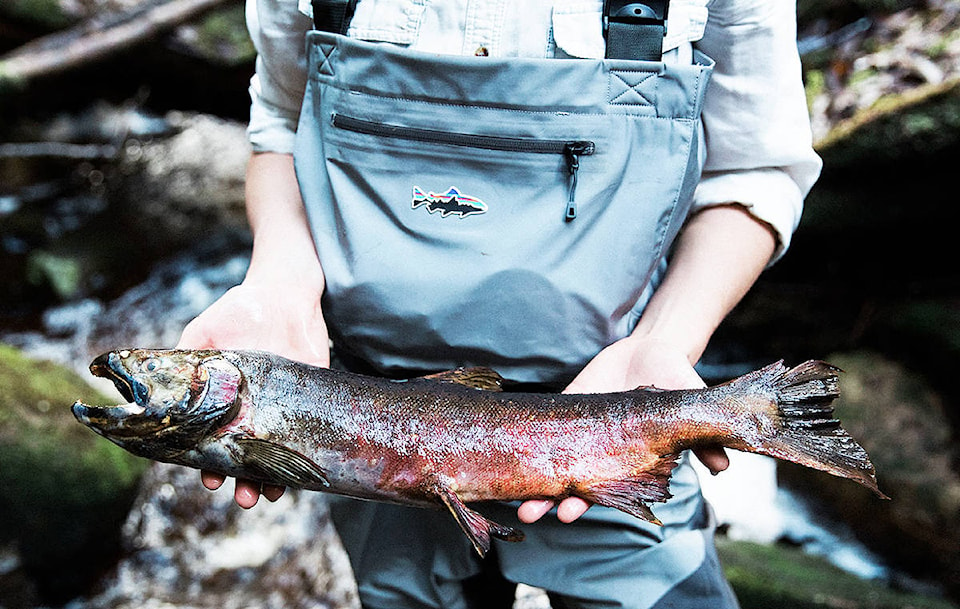An iconic and integral local species is about to get its closeup.
The Central Westcoast Forest Society has budgeted $10,000 for a roughly five-minute video showcasing local salmon populations.
“What we’re going to try and do is paint a picture of how ecologically, culturally, socially and economically important the species is to British Columbians and First Nations,” CWFS executive director Jessica Hutchinson told the Westerly.
“Not only are they integral to West Coast ecosystems, but they’re integral to our way of life out here.”
The film will feature both Clayoquot and Barkley Sound and include a speakers list that reflects the wide-ranging effects salmon have on the local landscape, from fishers to chefs to biologists.
“It’s really going to paint a picture of how intertwined the species is to the Coast,” she said.
“It’s a great opportunity to showcase the beauty of the area, the ecological and cultural wealth we have tied up in this species in this region and an opportunity to showcase one of the West Coast’s most iconic species.”
The movie has financial backing from Tofino’s Long Beach Lodge and the District of Tofino and, Hutchinson said, other funding partners are being sought out.
This would be the fourth video the CWFS has produced and Hutchinson said the visual medium is a solid way to push the society’s restoration messaging to the forefront, both locally and beyond.
“We’ve found that our films have been really successful in engaging and reaching a wider audience,” she said. “We have reached over 170,000 people through our films.”
She added salmon are struggling and efforts to restore their important habitats need to be put on the front-burner to help reverse the troubling, long-term trend they’re going through.
“Because of declining wild salmon populations on the Coast, now is the time to really bring to light how valuable in all aspects of that word this species is,” she said. “Salmon stocks are declining and have been declining since the 1970’s…This points to not only the need for restoration, but also the need for greater monitoring efforts in terms of better understanding wild salmon stocks.”
She hopes the movie will help highlight how important restoration efforts are.
“If we truly do recognize that this species is integral to our way of life and to our ecosystem, then now is the time to invest in conservation, monitoring, research and restoration,” she said. “You will have a greater appreciation of this species and how it actually does impact your life in terms of your dinner plate, or the trees that you value that grow along creek banks that you drive past.”
She explained salmon are natural nutrient-cyclers that have big impacts beyond being a food source.
“They packed on all these pounds and all these nutrients from the marine environment and they go back to their natal streams and after they finish the spawning process they die and they leave behind all those marine derived nutrients,” she said. “They’re basically fish fertilizer for the stream ecosystem and, quite often, they are dragged onto the stream banks and deep into the forest by bears, raccoons eagles and other animals and they there become fertilizer for those ecosystems.”
She said the species’ importance isn’t lost on locals and that West Coasters have a solid understanding of the impact salmon have on their surroundings, but a little extra motivation needs to be infused to get people on board with helping out.
“Everyone cares and everyone’s super stoked to get out fishing in the summertime, but they don’t necessarily participate in ensuring that the species continues for the generations to come,” she said.
“There’s often a disconnect between our love of catching salmon or eating salmon and ensuring that it’s sustainable.”
The CWFS has a variety of volunteer opportunities available and anyone interested in lending a hand is encouraged to reach out to info@clayoquot.org.
“We are keen to have people come out and get their hands dirty, helping to restore salmon habitat,” she said. “Not only is it a worthwhile cause, but it is super fun. It’s a rewarding opportunity to get out and get to know the watersheds you live in, be a part of restoring salmon habitats and be part of something great.”
